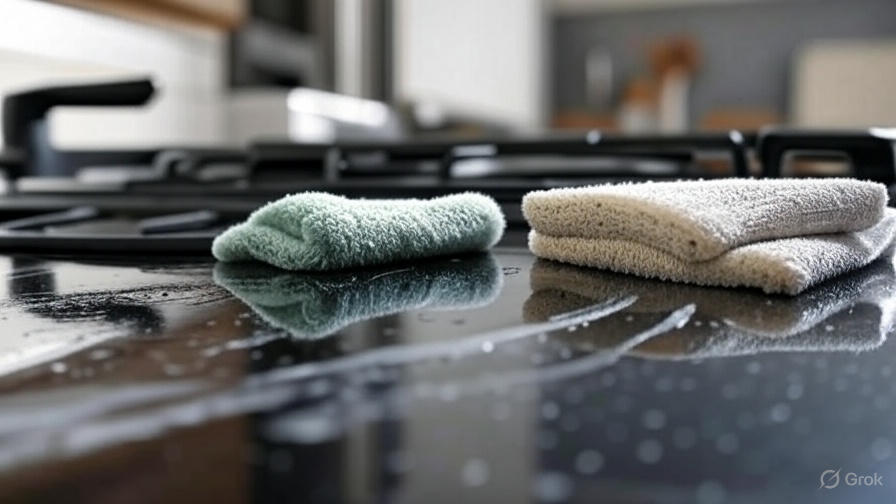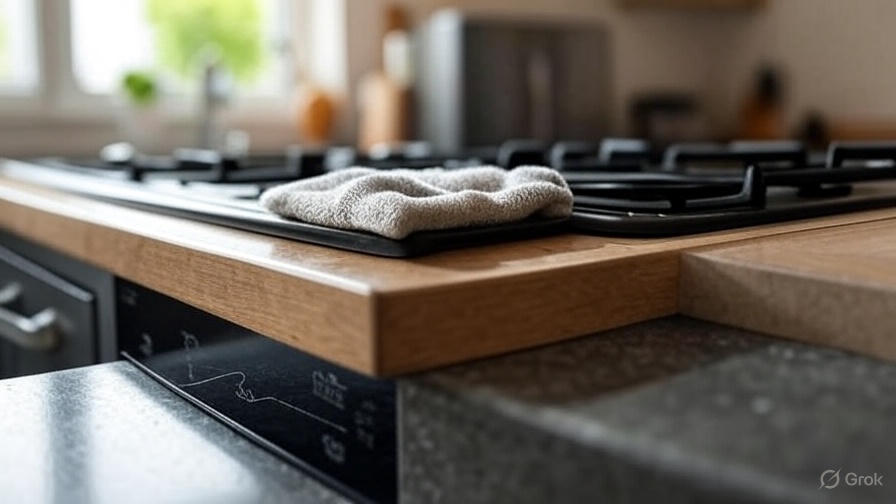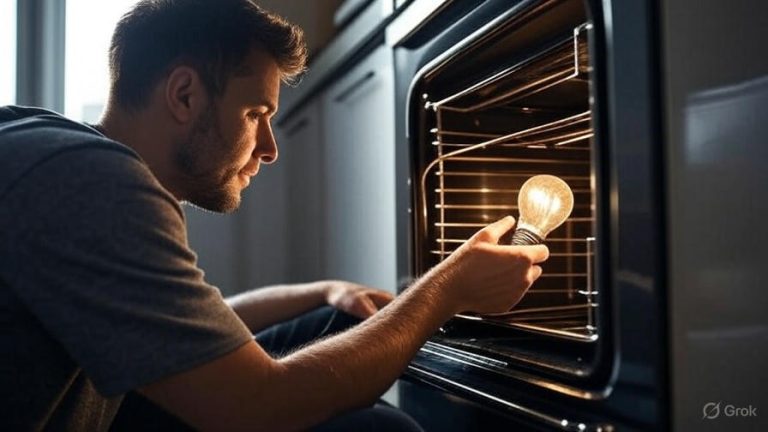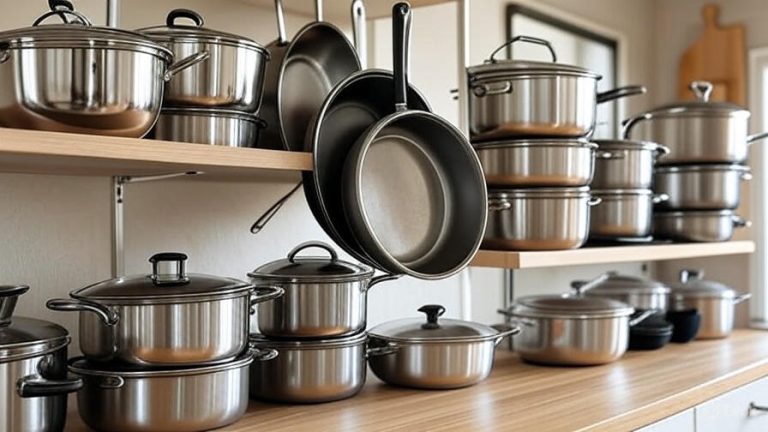How to Clean a Ceramic Cooktop?
Ceramic cooktops bring sleek style and efficient cooking to modern kitchens. These smooth glass surfaces heat up quickly and distribute heat evenly across your cookware. However, their beauty comes with a responsibility – proper cleaning and maintenance keep them looking pristine and functioning perfectly.
Many homeowners struggle with stubborn stains, burnt-on food, and scratches that seem impossible to remove. The good news? You can restore your ceramic cooktop to its original shine with the right techniques and cleaning supplies. This comprehensive guide walks you through everything you need to know about cleaning and maintaining your ceramic glass cooktop.
What Makes Ceramic Cooktops Different
Ceramic cooktops feature a smooth glass-ceramic surface that covers electric heating elements underneath. Unlike traditional coil burners, these flat surfaces provide a seamless cooking experience. The glass-ceramic material can withstand extreme temperatures while maintaining its structural integrity.
The smooth surface collects spills, grease, and food particles more visibly than other cooktop types. Every drop of oil and every bubble of boiling pasta water shows up clearly on the dark surface. This visibility actually works in your favor – you can spot problems before they become permanent stains.
Heat distribution across the entire cooking zone means spills often bake onto the surface. Sugar-based spills become particularly problematic because they can permanently damage the glass if not cleaned immediately. Understanding these characteristics helps you develop an effective cleaning routine.
Essential Cleaning Supplies You Need
Before starting your cleaning session, gather the right tools and products. Using inappropriate cleaners or abrasive materials can scratch or damage your cooktop surface permanently.
Start with a specialized ceramic cooktop cleaner. These products are formulated specifically for glass-ceramic surfaces and remove tough stains without scratching. Popular brands include Weiman, Affresh, and Bar Keepers Friend ceramic cooktop cleaners.
Invest in a ceramic cooktop scraper with a razor blade designed for glass surfaces. This tool removes burnt-on food and stubborn residue safely. Always use the scraper at a 45-degree angle to prevent scratching.
Microfiber cloths work best for wiping and polishing the surface. They trap dirt and oils without leaving lint or streaks. Keep several clean microfiber cloths on hand – you’ll need different cloths for cleaning and polishing.
White vinegar serves as an excellent natural cleaner for light stains and daily maintenance. Baking soda creates a gentle abrasive paste for tougher stains. Dish soap mixed with warm water handles basic cleaning tasks effectively.
Paper towels help with initial cleanup but shouldn’t be used for final polishing. They can leave fibers on the surface that become visible under kitchen lighting.
Daily Maintenance Keeps Your Cooktop Pristine
Daily care prevents small spills from becoming major cleaning challenges. After each cooking session, allow the cooktop to cool completely before cleaning. Hot surfaces can cause cleaning products to evaporate too quickly or even burn onto the glass.
Wipe down the surface with a damp microfiber cloth after every use. This simple step removes fresh spills, grease splatters, and food particles before they have time to bake on. For light stains, spray white vinegar onto the cool surface and wipe with a clean cloth.
Address spills immediately when possible. If something boils over during cooking, turn off the heat and carefully clean around the hot area once it’s safe to do so. Fresh spills come off much easier than dried, baked-on messes.
Keep your cooktop dry between uses. Water spots and mineral deposits from hard water can build up over time, creating a cloudy appearance. After cleaning, buff the surface with a dry microfiber cloth to prevent water spots.
Deep Cleaning Process Step by Step
Weekly deep cleaning removes accumulated grease, stains, and residue that daily wiping can’t handle. This thorough process restores your cooktop’s original appearance and prevents permanent damage.
Step 1: Cool Down and Initial Cleaning
Ensure your cooktop is completely cool before starting. Remove any loose debris with a soft cloth or paper towel. Apply ceramic cooktop cleaner across the entire surface, following the manufacturer’s instructions for application amounts.
Step 2: Let the Cleaner Work
Allow the cleaning product to sit for the recommended time, usually 10-15 minutes. This waiting period lets the cleaner break down grease and dissolve mineral deposits. Don’t let the cleaner dry completely on the surface.
Step 3: Scraping Stubborn Spots
Use your ceramic cooktop scraper to remove burnt-on food and tough stains. Hold the scraper at a 45-degree angle and push gently in one direction. Avoid back-and-forth scraping motions that can scratch the surface. Clean the scraper blade frequently to prevent redistributing debris.
Step 4: Wiping and Polishing
Wipe away the loosened debris and cleaner with a damp microfiber cloth. Rinse the cloth frequently in clean water to avoid spreading dirt around the surface. Follow up with a dry microfiber cloth to remove any remaining cleaner residue and water spots.
Step 5: Final Polish
Apply a small amount of ceramic cooktop cleaner to a clean, dry microfiber cloth. Buff the entire surface in circular motions to create a protective layer and restore shine. This final step helps prevent future stains from adhering to the surface.

Tackling Specific Types of Stains
Different types of spills require different cleaning approaches. Knowing how to handle various stains prevents damage and ensures effective removal.
Grease and Oil Stains
Grease creates some of the most common cooktop stains. Mix equal parts white vinegar and warm water in a spray bottle. Spray the solution over the grease stains and let it sit for five minutes. Wipe with a microfiber cloth, then follow up with your regular ceramic cooktop cleaner.
For heavy grease buildup, create a paste with baking soda and water. Apply the paste to the stained areas and let it sit for 15 minutes. Gently scrub with a soft cloth, then wipe clean with a damp microfiber cloth.
Sugar-Based Spills
Sugar, candy, and syrup spills require immediate attention. These substances can permanently damage your cooktop if they cool and harden on the surface. If the spill occurs while cooking, turn off the heat immediately.
Once the area is safe to touch but still warm, use your ceramic cooktop scraper to remove as much of the spill as possible. Clean the remaining residue with a specialized ceramic cooktop cleaner. Never use water on sugar spills while the surface is hot – this can cause thermal shock and crack the glass.
Hard Water Spots and Mineral Deposits
Hard water leaves chalky white spots that can make your cooktop look cloudy. White vinegar dissolves these mineral deposits effectively. Apply undiluted white vinegar to the spots and let it sit for 10 minutes.
Wipe with a damp microfiber cloth, then dry immediately to prevent new water spots from forming. For stubborn mineral buildup, use a paste made from cream of tartar and water. This mild acid dissolves minerals without scratching the glass surface.
Burnt-On Food Particles
Food that burns onto the cooktop requires careful removal to avoid scratching. Apply ceramic cooktop cleaner generously over the burnt areas. Place a damp cloth over the cleaner to prevent it from drying out, and let it sit for 20 minutes.
Use your scraper to gently remove the softened food particles. Work in one direction and clean the scraper blade frequently. Stubborn spots may require multiple applications of cleaner and patient scraping.
Natural Cleaning Solutions That Work
Many homeowners prefer natural cleaning methods for their cooktops. These eco-friendly alternatives clean effectively without harsh chemicals.
Baking Soda Paste
Create a cleaning paste with three parts baking soda to one part water. This mild abrasive removes stains without scratching the glass surface. Apply the paste to problem areas and let it sit for 15 minutes before scrubbing gently with a soft cloth.
White Vinegar Solutions
White vinegar cuts through grease and dissolves mineral deposits naturally. Use it full strength for tough stains or diluted with water for daily cleaning. The acidic properties break down alkaline stains and soap scum effectively.
Lemon and Salt Scrub
Cut a fresh lemon in half and dip it in coarse salt. Rub the lemon over stained areas to create a natural scrubbing action. The citric acid in lemon juice dissolves grease while the salt provides gentle abrasion. Rinse thoroughly after scrubbing to remove all residue.
Dish Soap and Warm Water
Simple dish soap mixed with warm water handles basic cleaning tasks well. This gentle solution works for daily maintenance and light stains. Use a few drops of dish soap in a bowl of warm water, then wipe the cooktop with a microfiber cloth soaked in the solution.
What to Avoid: Common Cleaning Mistakes
Certain cleaning products and techniques can permanently damage your ceramic cooktop. Avoiding these mistakes protects your investment and keeps your cooktop looking new.
Abrasive Cleaners and Tools
Never use abrasive cleansers, steel wool, or scouring pads on your ceramic cooktop. These materials scratch the glass surface, creating permanent damage that cannot be repaired. Even gentle abrasives like soft-scrub cleaners can cause microscopic scratches over time.
Cleaning While Hot
Resist the temptation to clean spills while the cooktop is still hot. Cleaning products can bake onto the hot surface, creating new stains that are harder to remove than the original spill. Cold water on a hot surface can cause thermal shock and crack the glass.
Wrong Types of Scrapers
Only use scrapers specifically designed for ceramic cooktops. Regular razor blades, metal spatulas, and putty knives can scratch the surface. The proper scraper has a holder that maintains the correct angle and protects your fingers.
Harsh Chemical Cleaners
Avoid bleach, ammonia, and other harsh chemicals that can damage the glass surface or leave residue. These products may also react with food particles or other cleaning products, creating dangerous fumes.
Preventing Damage and Extending Cooktop Life
Proper cooking habits and preventive measures keep your ceramic cooktop in excellent condition for years. These practices prevent problems before they start.
Use Appropriate Cookware
Flat-bottomed pans with smooth surfaces work best on ceramic cooktops. Warped or damaged cookware can scratch the glass surface. Cast iron and stone cookware require extra care – lift them straight up when moving rather than sliding across the surface.
Check your cookware for rough spots on the bottom that could scratch the cooktop. Sand down any rough areas with fine-grit sandpaper, or replace damaged pans to protect your cooktop surface.
Control Spills and Splatters
Use lids on pots and pans to prevent splattering. When boiling liquids, reduce heat once boiling begins to prevent violent bubbling that can cause spills. Keep pot sizes appropriate for the heating elements to maintain better control over your cooking.
Place a splatter screen over frying pans to catch grease and oil. This simple tool prevents most spattering while still allowing steam to escape. Clean splatter screens regularly to maintain their effectiveness.
Regular Maintenance Schedule
Develop a consistent cleaning schedule to prevent buildup of stains and residue. Wipe the cooktop after each use, perform weekly deep cleaning, and address spills immediately. Regular maintenance takes less time than deep cleaning heavily soiled surfaces.
Inspect your cooktop regularly for signs of damage like chips, cracks, or deep scratches. Address small problems before they become larger issues that might require professional repair or replacement.
Troubleshooting Common Cleaning Challenges
Even with proper care, you may encounter challenging cleaning situations. These troubleshooting tips help you handle difficult problems safely and effectively.
Persistent Stains That Won’t Budge
Some stains require multiple cleaning sessions to remove completely. Apply ceramic cooktop cleaner and let it sit longer than usual – up to 30 minutes for tough stains. Cover the cleaner with plastic wrap to prevent it from drying out.
Try alternating between different cleaning methods. If commercial cleaner doesn’t work, try the baking soda paste method, then return to commercial cleaner. Sometimes different approaches work better on different types of stains.
Scratches and Surface Damage
Light scratches may improve with polishing using ceramic cooktop cleaner and a soft cloth. Deep scratches usually cannot be repaired and may require professional assessment. Never attempt to sand or buff out scratches with abrasive materials.
Cloudy or Hazy Appearance
A cloudy appearance usually results from cleaner residue or hard water deposits. Clean the surface thoroughly with white vinegar, then polish with ceramic cooktop cleaner. Make sure to buff away all cleaner residue with a dry microfiber cloth.
If cloudiness persists, you may be using too much cleaning product. Use less cleaner and focus on thorough buffing to remove all residue.
Long-Term Care and Professional Maintenance
With proper care, ceramic cooktops can last for many years while maintaining their attractive appearance. Long-term maintenance involves both daily habits and occasional professional attention.
Schedule annual professional inspections if you use your cooktop heavily. Professional technicians can identify potential problems and perform maintenance that keeps your cooktop operating efficiently.
Keep warranty information and follow manufacturer recommendations for cleaning and care. Using approved cleaning methods and products protects your warranty coverage.
Consider the age and condition of your cooktop when deciding on repair versus replacement. Minor damage can often be lived with, but extensive scratching or cracks may warrant replacement for both safety and appearance reasons.
Your ceramic cooktop represents a significant investment in your kitchen’s functionality and appearance. With the right cleaning techniques, appropriate products, and consistent maintenance, you can keep it looking beautiful and performing perfectly for years to come. The smooth, elegant surface that attracted you to ceramic cooking will continue to enhance your kitchen’s style while providing excellent cooking performance.
Remember that patience and gentle techniques produce the best results. Take time to clean properly rather than rushing through the process. Your ceramic cooktop will reward careful maintenance with years of reliable service and stunning appearance that makes cooking a pleasure every day.







